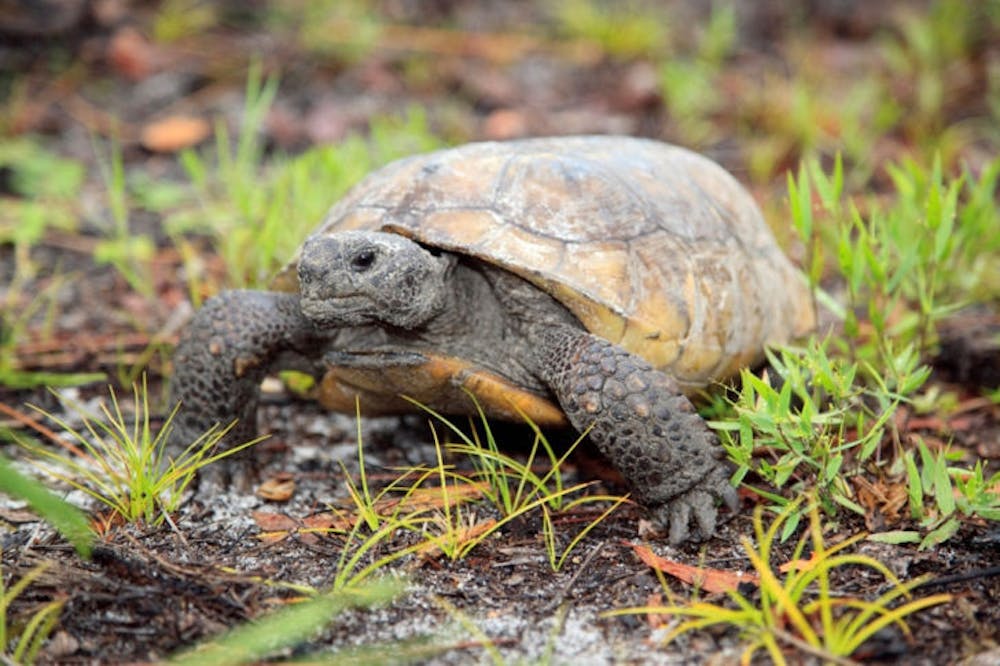As spring continues, Floridians can expect to see more gopher tortoises poking their heads out.
Gopher tortoises become more active this time of the year to find mates and food, making them more likely to crawl on to busy roads, according to a Florida Fish and Wildlife Conservation Commission news release.
The gopher tortoise is a threatened species. This means it’s on a rate of decline but not endangered yet.
Eric Suarez, a 28-year-old UF graduate student in wildlife ecology and conservation, said transporting gopher tortoises is illegal.
However, if a tortoise is in the middle of the road, people are encouraged to help it. Suarez said he recommends putting it on the side of the road it was crawling toward.
Motorists should keep an eye out for baby tortoises as more adult tortoises find mates and have offspring, he said.
“Once females lay eggs and those eggs hatch, then there will be a lot of juveniles and hatchlings moving around to find burrows and so forth,” he said.
FWC local government coordinator Allie Perryman said the gopher tortoise is a keystone species, which means other species live in or have been found within their burrows. Some of these other species are also threatened.
“A decline in gopher tortoises could mean a decline in those species as well,” Perryman said.
The commission has released an app, called Florida Gopher Tortoise, to encourage people to participate in the conservation efforts of the gopher tortoise.
Perryman said the app not only helps the commission map out the location of the tortoises and their burrows, but it can also help educate the general public.
To report an injured or dead gopher tortoise, download the app, call the FWC at 850-921-1030 or call the Wildlife Alert hotline at 888-404-3922.
[A version of this story ran on page 9 on 4/15/2014 under the headline "Gopher tortoises active, threatened"]
In this photo from the Florida Fish and Wildlife Conservation Commission, a gopher tortoise moves through freshly sprouted vegetation following a prescribed burn.






